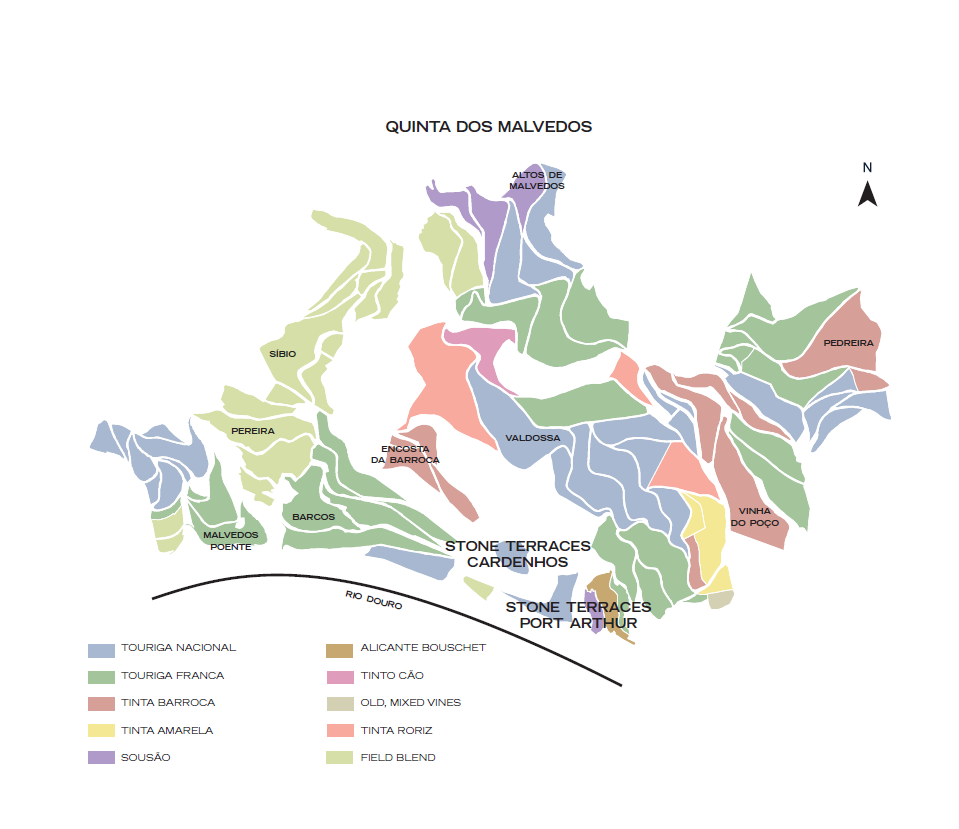Page 1 of 1
2018 Quinta do Vesuvio
Posted: 03:16 Tue 07 Jul 2020
by Andy Velebil
2018 Quinta do Vesuvio Vintage Port (Cask Sample)
This was the first time that Touriga Franca was co-fermented with Alicante Bouschet. Touriga Nacional and Sousao being added later. A dark inky color. Powerful scents of violets, esteva, and plums emanated from the glass. The palate was a touch sweeter than I recall for a young Vesuvio, though that could have just been it’s youthful fruit playing tricks. A silky body with black fruit, menthol, minerality, black pepper and moderate tannins. Then out of nowhere, chocolate dominated the fruit on day three. A bit softer on the palate than some recent VP’s from this Estate but still retaining plenty of grip. The finish is where this picked up steam and did linger for quite some time and really helped the overall experience. This showed best on the first two days opened, then wasn’t as expressive on day three; not uncommon for a cask sample. A lovely Port which I look forward to seeing develop in the coming decades.
91-93 Points
Re: 2018 Quinta do Vesuvio Vintage Port (Cask Sample)
Posted: 08:17 Tue 07 Jul 2020
by JacobH
I don't think I've seen Alicante Bouschet referred to in the context of Port before, although reading about it, I can understand why they would use it. Wikipedia refers to its thick skins and comments that "the intense red color was also helpful for stretching the wine during prohibition, as it could be diluted without detracting from the appearance".
Whilst they are probably suggesting co-fermentation is a good thing- isn't conventional wisdom that you try to seperate as much as you possibly can so that you can do the blending at leisure after fortification rather than on the bases of the bunches of grapes coming in?!
Re: 2018 Quinta do Vesuvio Vintage Port (Cask Sample)
Posted: 13:06 Tue 07 Jul 2020
by Andy Velebil
JacobH wrote: ↑08:17 Tue 07 Jul 2020
I don't think I've seen Alicante Bouschet referred to in the context of Port before, although reading about it, I can understand why they would use it. Wikipedia refers to its thick skins and comments that "the intense red color was also helpful for stretching the wine during prohibition, as it could be diluted without detracting from the appearance".
Whilst they are probably suggesting co-fermentation is a good thing- isn't conventional wisdom that you try to seperate as much as you possibly can so that you can do the blending at leisure after fortification rather than on the bases of the bunches of grapes coming in?!
It's not new to the Douro, but perhaps its become a bit more important as producers find out about its virtues.
Co-fermenting never did stop. Subsided some when block planting gained fashion. My understanding is some producers are going back to co-fermenting more often than in the recent past.
My opinion...I think producers have learned that either extreme (block planting and field blends) aren't the sole answer, but some mix of both have their place.
Re: 2018 Quinta do Vesuvio Vintage Port (Cask Sample)
Posted: 10:38 Wed 08 Jul 2020
by JacobH
Andy Velebil wrote: ↑13:06 Tue 07 Jul 2020
Co-fermenting never did stop. Subsided some when block planting gained fashion. My understanding is some producers are going back to co-fermenting more often than in the recent past.
My opinion...I think producers have learned that either extreme (block planting and field blends) aren't the sole answer, but some mix of both have their place.
Assuming that you have capacity to ferment, fortify and store them separately, what is the advance of co-fermenting two types of grapes together? I can’t really work it out, conceptually, in my mind! I appreciate field blends are a different proposition altogether.
Re: 2018 Quinta do Vesuvio Vintage Port (Cask Sample)
Posted: 16:27 Wed 08 Jul 2020
by Glenn E.
JacobH wrote: ↑08:17 Tue 07 Jul 2020
I don't think I've seen Alicante Bouschet referred to in the context of Port before
There's a significant amount of AB planted at Quinta dos Malvedos in the (expanded) Port Arthur vineyard.
What one normally thinks of as Port Arthur is the east-facing slope leading down from the house to the ravine that runs from the river to behind (north) of the house where Vinha dos Cardenhos (the other half of Graham's The Stone Terraces) is located. Across that ravine along the river is a west-facing slope. The lower part of that slope just above the ravine is Sousao while the middle is Alicante Boushet and the upper portion (just below the road) is Touriga Franca. That's the only parcel of Alicante Bouchet at Malvedos, so there's not a lot, but it's been a part of Graham's Ports for a while now.
(Image from Graham's product announcement for the 2016 Graham's The Stone Terraces, which can be found
here.)

- Quinta dos Malvedos.png (94.49 KiB) Viewed 3665 times
Re: 2018 Quinta do Vesuvio Vintage Port (Cask Sample)
Posted: 18:14 Wed 03 Nov 2021
by MigSU
Just to complete Glenn's information: there's also plenty of AB in Senhora da Ribeira, Canais, Cabeço, and Cachão do Arnozelo.